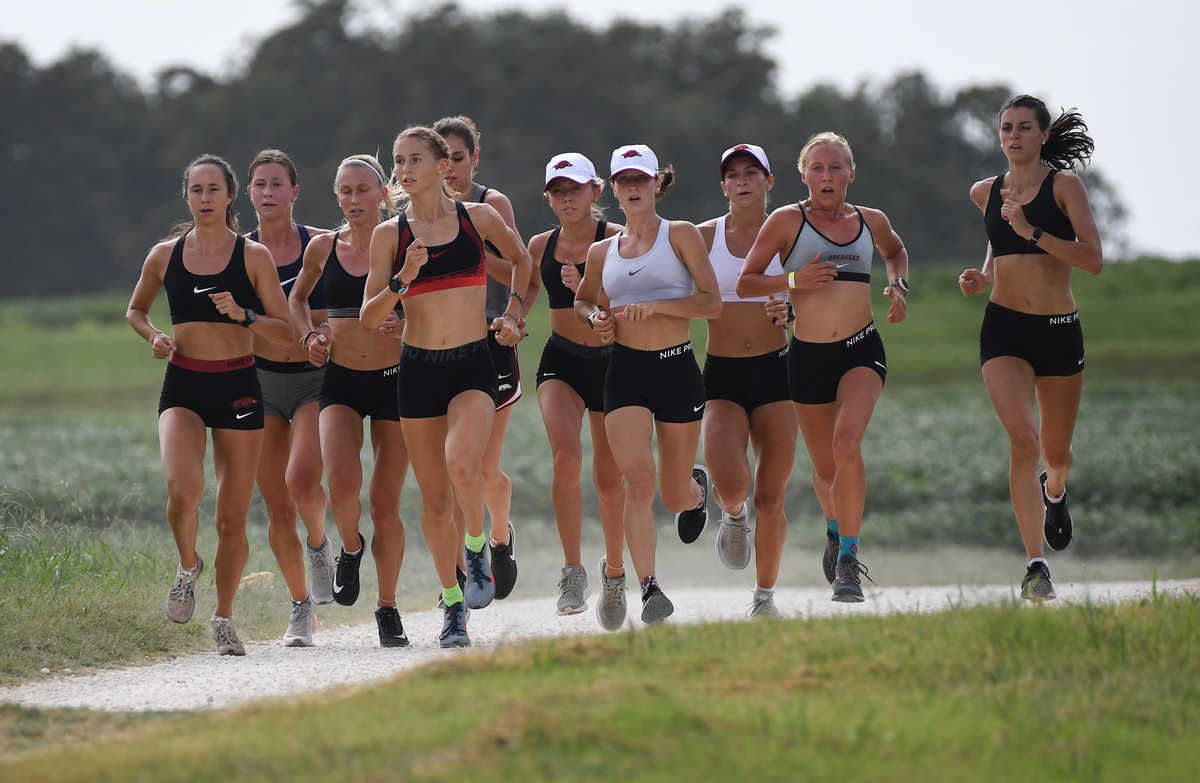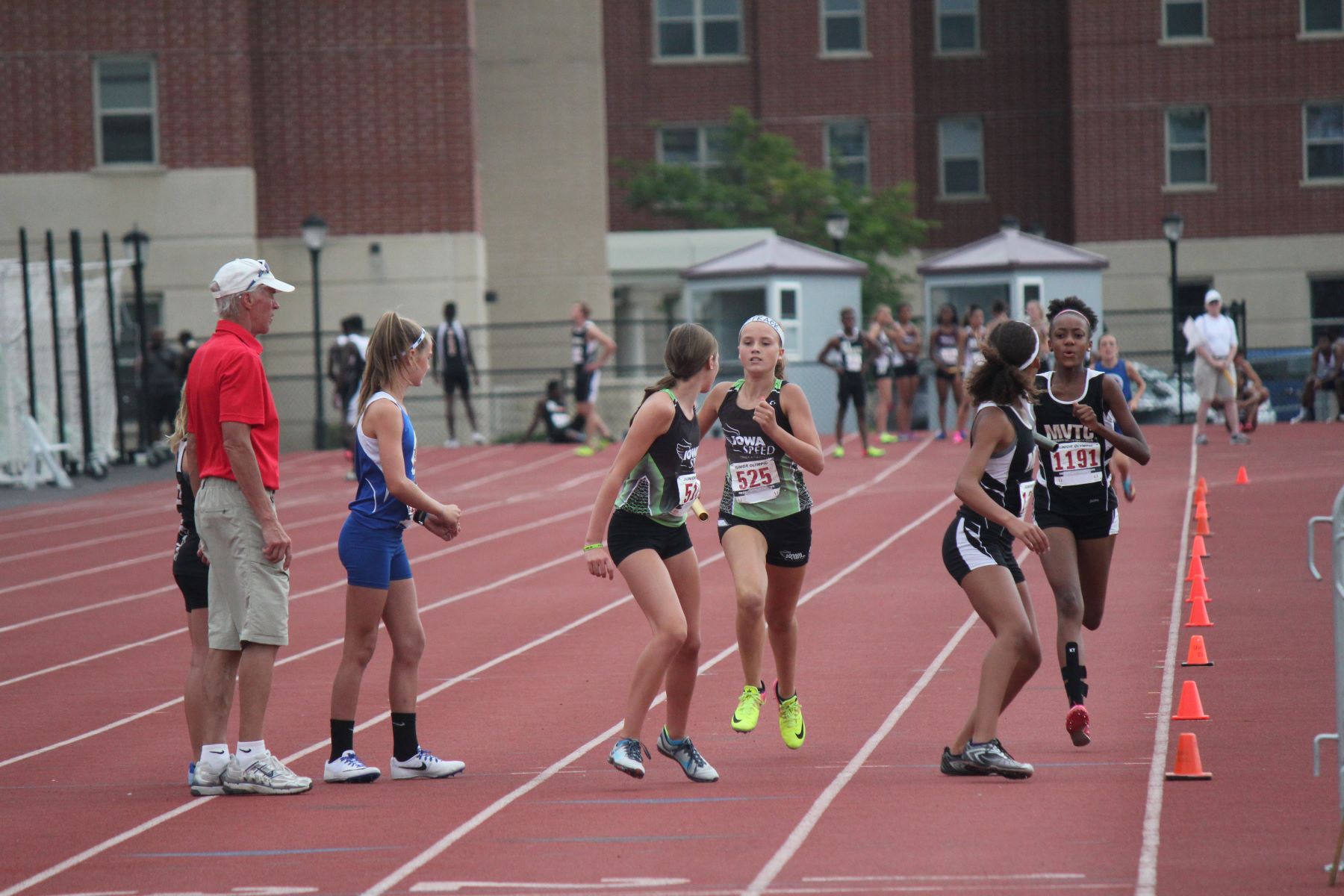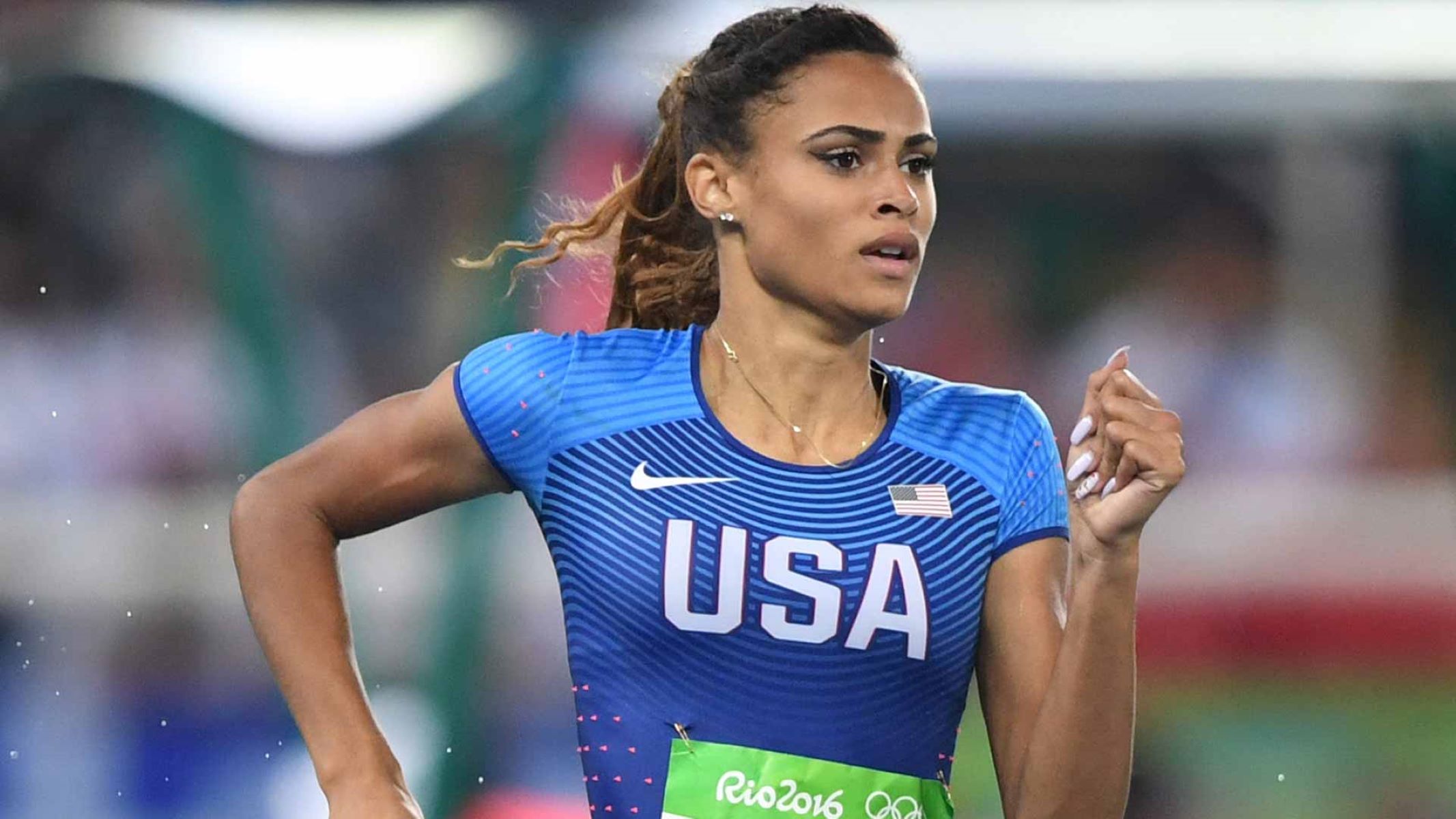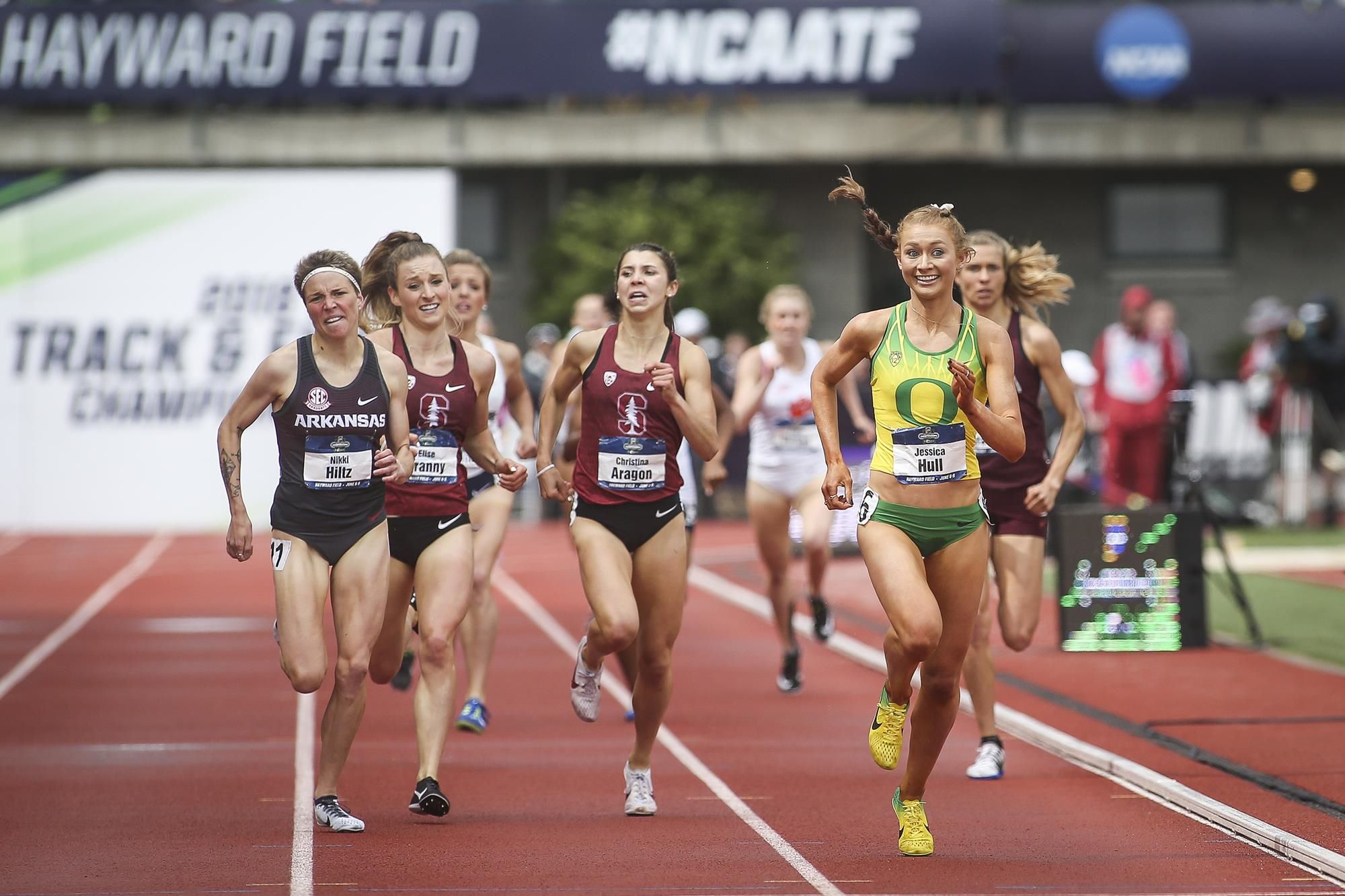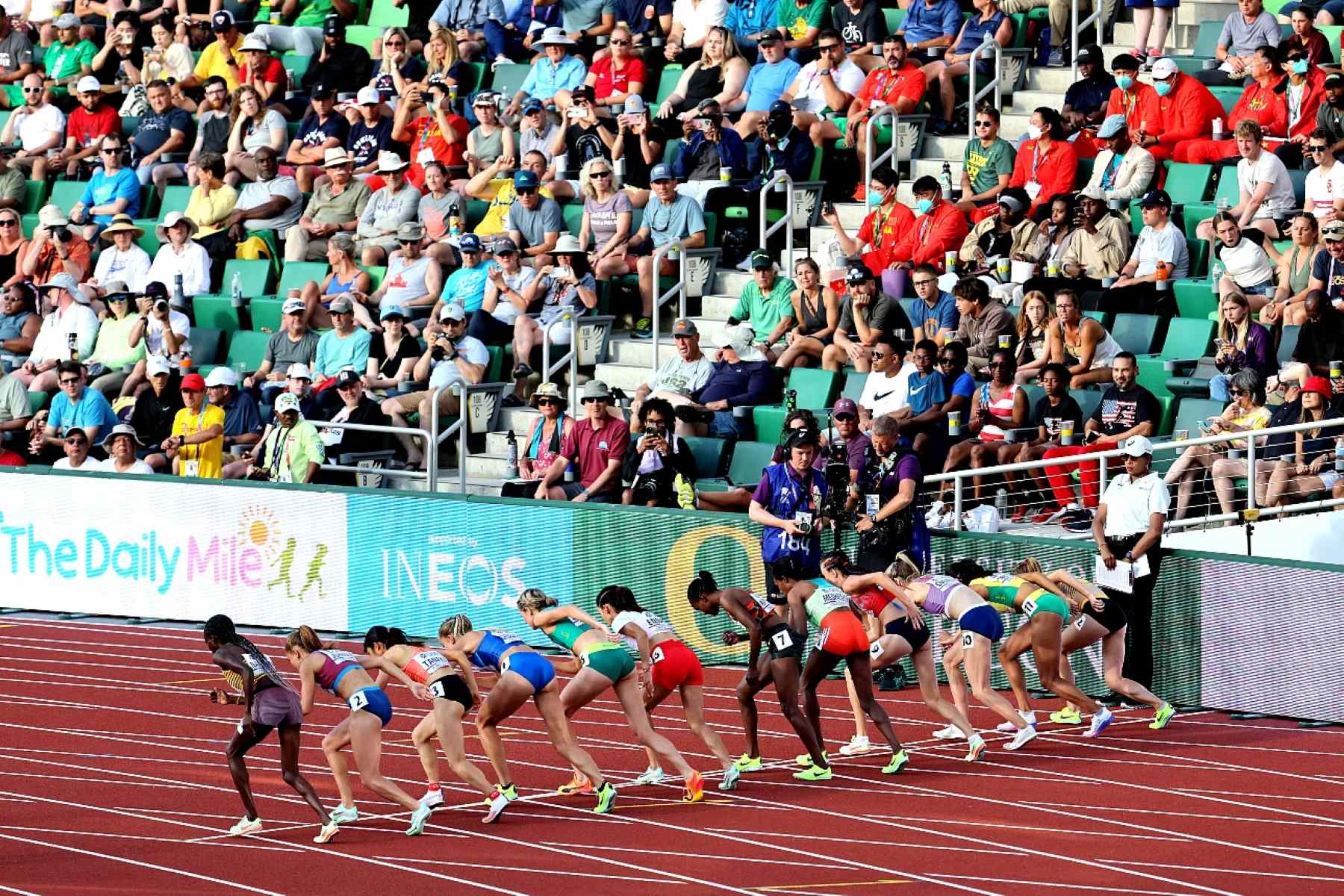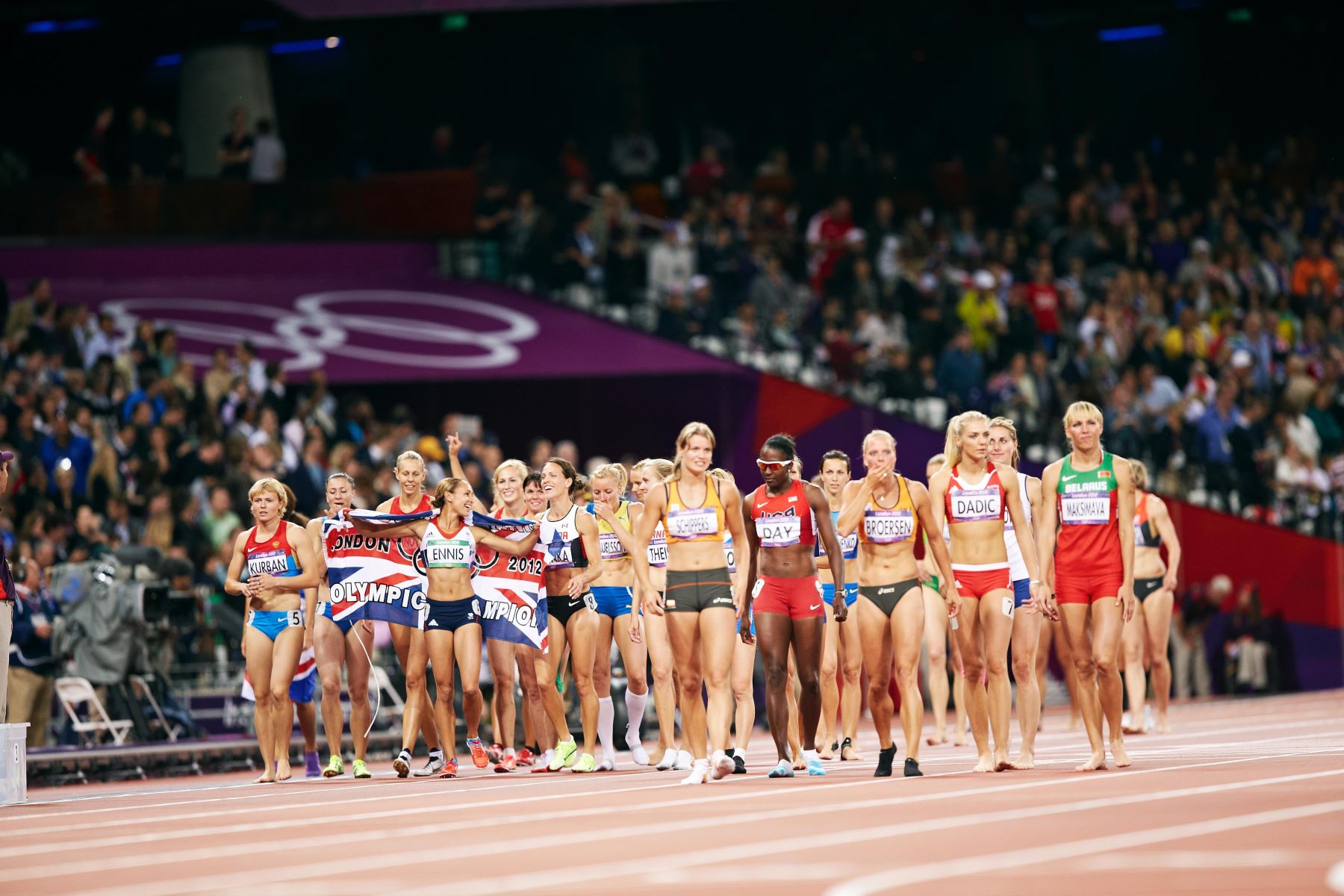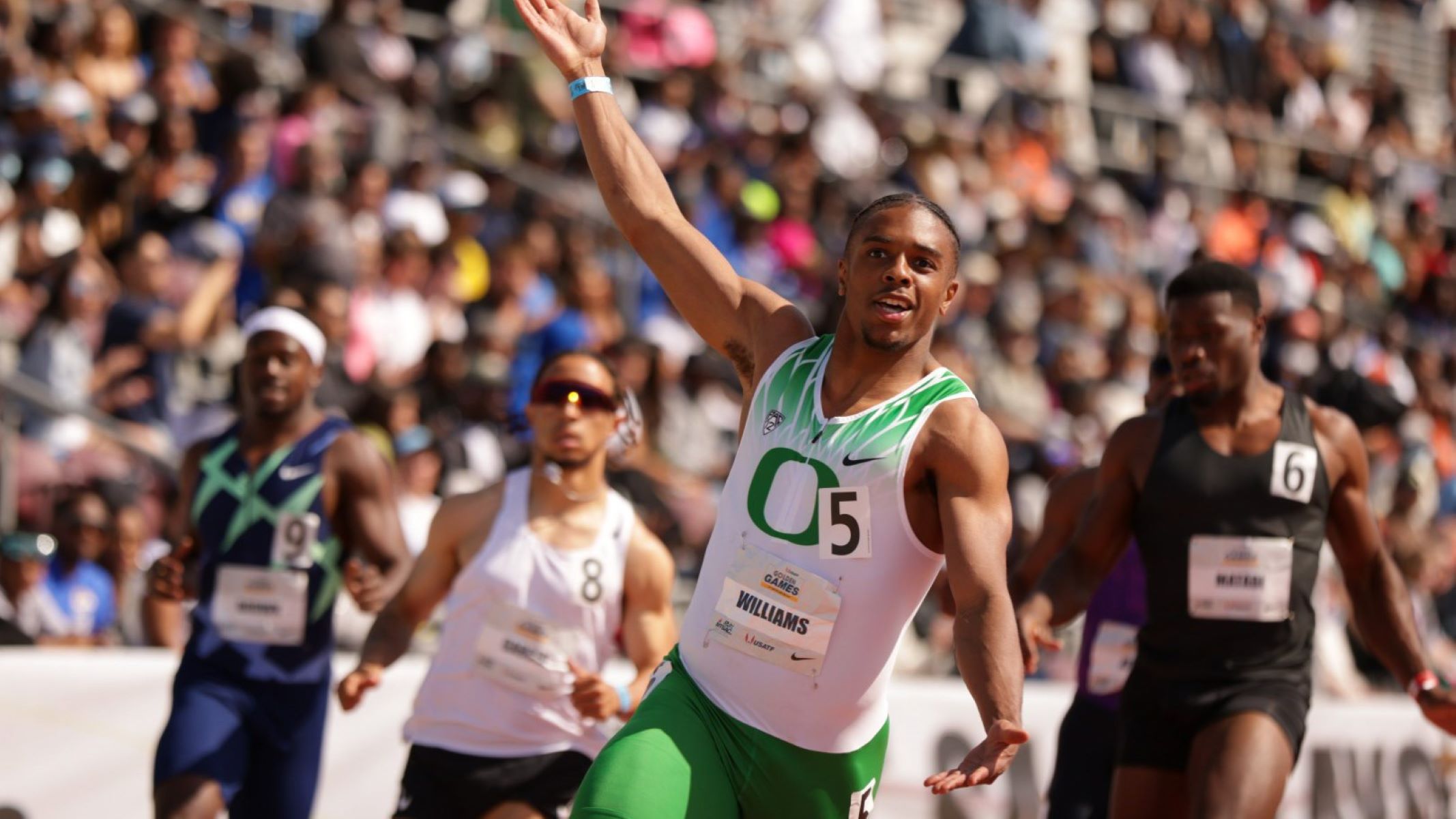Home>Misc>Featured>How Many Regions In 2A For The State Of Kansas Track And Field


Featured
How Many Regions In 2A For The State Of Kansas Track And Field
Modified: January 2, 2024
Discover the featured regions in 2A for the thrilling Kansas State Track and Field Championship. Experience the top talents and fierce competition in this exciting event.
Introduction
Welcome to the exciting world of 2A Track and Field in the state of Kansas! For athletes and fans alike, track and field events are not just a showcase of speed and agility, but also a testament to the dedication and perseverance of the athletes. In Kansas, track and field is a beloved sport, and the 2A class holds a significant place in the athletic landscape.
Before diving into the regions in 2A track and field in Kansas, let’s first clarify what exactly 2A refers to. In the realm of high school sports, classifications are used to group schools based on their size or enrollment. 2A, specifically, represents schools with a moderate number of students, striking a balance between larger schools with more resources and smaller schools with more intimate communities.
The state of Kansas boasts a vibrant and competitive track and field scene, and it is no surprise that the sport has a rich history here. From legendary coaches to record-breaking athletes, the state has seen its fair share of remarkable performances on the track and in the field.
Track and field events in Kansas are organized into various regions, ensuring fair competition and providing athletes with the opportunity to showcase their skills. In this article, we will explore the different regions in 2A track and field and shed light on the significance of these competitions for athletes.
Whether you are a student-athlete looking to make your mark or a dedicated fan eager to cheer on your favorite teams, understanding the importance and structure of the regional championships in 2A track and field will undoubtedly enhance your overall experience.
So, get ready to embark on a journey through the splendid world of 2A track and field in Kansas as we uncover the regions, the challenges, and the strategies for success in these highly-anticipated championships!
Definition of 2A (Class 2A)
In the realm of high school sports, classifications are used to group schools based on their size or enrollment. These classifications ensure fair competition by pitting schools of similar resources and student populations against each other. In Kansas, one of the classifications is 2A, commonly referred to as Class 2A.
So, what exactly does 2A mean in the context of high school sports in Kansas? 2A represents the second smallest classification, with schools that have a moderate number of students. It strikes a balance between larger schools in higher classifications and smaller schools in lower classifications.
Typically, the classification of a school is determined by the Kansas State High School Activities Association (KSHSAA) based on the number of enrolled students in grades 9-12. The KSHSAA periodically reviews and adjusts the classifications to accommodate changes in enrollment. This ensures that schools with similar resources and athletic programs are competing against each other.
Class 2A encompasses a range of schools across Kansas, from rural communities to smaller towns. These schools have dedicated student-athletes who excel in various sports, including track and field. While the classification may refer to the size of the school population, it does not imply any limitation on the talent and abilities of the athletes.
It is important to note that the classification of a school can have a significant impact on its athletic programs. Smaller schools might have limited resources, both in terms of facilities and coaching staff, compared to larger schools. However, this does not deter the commitment and determination of the athletes and coaches at 2A schools.
Class 2A creates a level playing field for schools with similar enrollments, allowing them to compete against each other in various sports, including track and field. This classification system promotes fair and exciting competition while providing opportunities for athletes to showcase their abilities and potentially earn recognition at the state level.
Now that we have a clear understanding of what 2A represents in the context of high school sports in Kansas, let’s delve into the world of track and field and explore the regions that make up this competitive sport!
Overview of the State of Kansas Track and Field
Kansas, known as the “Sunflower State,” is not only famous for its golden wheat fields and picturesque landscapes but also for its thriving track and field scene. The state has a long-standing tradition of excellence in high school sports, and track and field is no exception.
Track and field in Kansas is deeply rooted in the state’s history, with passionate athletes and dedicated coaches pushing the boundaries of their abilities year after year. The sport encompasses a wide range of events, including sprints, distance races, jumps, throws, and relays.
One of the key governing bodies for high school athletics in Kansas is the Kansas State High School Activities Association (KSHSAA). The KSHSAA is responsible for organizing and overseeing various sports competitions, including track and field.
Each year, hundreds of high school athletes across the state train rigorously, honing their skills and striving to achieve personal bests. The track and field season kicks off in the spring, when athletes from all classifications, including 2A, compete in local and regional meets.
From small towns to urban centers, track and field events take place at various high schools and college facilities throughout Kansas. These venues serve as the battleground for fierce competition and awe-inspiring performances.
Track and field not only provides athletes with an opportunity to showcase their physical prowess but also teaches valuable life lessons such as discipline, perseverance, teamwork, and sportsmanship. The sport fosters a sense of camaraderie and builds lasting memories for athletes and spectators alike.
In Kansas, track and field is much more than a mere competition. It is a celebration of athleticism, where communities come together to support their teams and athletes. The cheers from the stands, the adrenaline-fueled moments, and the intense rivalries create an electrifying atmosphere that elevates the sport to new heights.
Moreover, track and field in Kansas has produced numerous exceptional athletes who have gone on to excel at the collegiate and professional levels. These athletes serve as an inspiration to aspiring track and field stars, highlighting the potential for success that can be achieved through hard work and dedication.
As we explore the regions in 2A track and field in Kansas, it is important to recognize the rich history, competitive spirit, and community support that make the state’s track and field scene truly remarkable. The upcoming sections will delve into the specific regions within the 2A classification, shedding light on the role they play in shaping the track and field landscape in Kansas.
Regions in 2A Track and Field
Track and field events in the state of Kansas are divided into regions, and the 2A classification is no exception. These regions serve as the battleground for intense competitions, where athletes from 2A schools across the state go head-to-head to secure a spot in the coveted state championships.
In the 2A classification, Kansas is divided into various regions, depending on the number of schools and geographical locations. Each region consists of a group of schools that compete against each other in track and field events. The specific number of regions may vary from year to year based on the number of schools participating in the 2A classification.
These regions play a crucial role in the track and field season, as they are where athletes have the opportunity to showcase their abilities and earn qualifying spots for the state championships. The competitions within the regions are fierce and highly competitive, pushing athletes to their limits and bringing out the best in their performances.
The exact composition of regions in 2A track and field can change from year to year, but they typically follow a geographic distribution. This allows for balanced competition between schools in close proximity to each other, reducing travel time and fostering rivalries between local teams.
Regionals are often held at a central location within each region, providing a neutral ground for competition. This ensures fair judging, consistent facilities, and a level playing field for all athletes.
Participating in regional competitions provides athletes with valuable experience and exposure to intense competition. It allows them to gauge their skills against other top athletes in the region, serving as a stepping stone towards the ultimate goal of qualifying for the state championships.
Moreover, the regions create a sense of community and camaraderie among schools in the 2A classification. Athletes have the chance to build connections and friendships with their peers from rival schools, forming bonds that can last a lifetime.
Overall, the regions in 2A track and field offer a platform for athletes to showcase their talents, compete against their peers in a fair and challenging environment, and strive towards qualifying for the state championships. These regional competitions not only contribute to the growth and development of individual athletes but also enhance the overall competitiveness and vibrancy of track and field in the state of Kansas.
Importance of Regions in 2A for Kansas Track and Field
The regions in 2A track and field hold significant importance in the landscape of the sport in Kansas. These regional competitions serve as a crucial step for athletes on their journey towards the state championships, providing a platform to showcase their talents, test their skills, and qualify for the ultimate showdown.
One of the key reasons why the regions play such a vital role is the level of competition they offer. Athletes competing in 2A track and field face off against schools of similar size and resources within their region. This creates a fair and balanced playing field, allowing athletes to compete against individuals who are at a similar athletic level and have similar access to training facilities and coaching.
The regional competitions also play a crucial role in qualifying athletes for the state championships. To secure a spot at the state level, athletes must perform well in their regional competitions and earn one of the qualifying positions. This adds an additional layer of pressure and motivation for athletes, as they strive to outperform their competitors and secure their place at the prestigious state event.
Moreover, the regional competitions serve as an opportunity for athletes to gain invaluable experience and exposure. Competing in a high-stakes environment against top athletes in their region helps athletes refine their skills, develop strategic approaches to races, and learn from their successes and failures. The experience gained in regional competitions can be instrumental in preparing athletes for the state championships, where the competition reaches even greater heights.
Additionally, the regions in 2A track and field foster a sense of community and camaraderie among athletes, coaches, and fans from schools within each region. Regional competitions bring people together, creating a supportive and spirited atmosphere where rivalries are forged and friendships are made. The bonds formed during these competitions can extend beyond the track and field, contributing to the overall sense of unity and sportsmanship within the Kansas track and field community.
Participating in regional competitions also allows athletes to represent their schools and communities on a wider stage. Athletes have the opportunity to showcase their talents and achievements in front of spectators, college scouts, and potential sponsors. Regional competitions provide a platform for athletes to make a name for themselves, potentially opening doors to further opportunities in their athletic and academic careers.
Ultimately, the regions in 2A track and field hold immense importance in shaping the track and field landscape in Kansas. From the level of competition to the qualification process and the sense of community they foster, these regional competitions are a vital component of the journey that athletes undertake on their quest for excellence in the sport.
Benefits of Competing in Regional Championships in 2A
Competing in regional championships in the 2A classification of Kansas track and field offers an array of benefits for athletes. These championships serve as a key stepping stone on the path to success, providing unique opportunities for growth, recognition, and personal achievement.
One of the primary benefits of participating in regional championships is the level of competition. Athletes have the chance to compete against the best in their region, facing off against competitors who have excelled in their respective events. This high level of competition pushes athletes to perform at their best, inspiring them to push beyond their limits and reach new heights in their athletic abilities.
Furthermore, regional championships provide a platform for athletes to showcase their skills and talents. Outstanding performances in these championships can attract attention from college coaches and scouts, offering the potential for scholarships and opportunities to compete at the collegiate level. The exposure gained through regional championships can significantly impact an athlete’s athletic and academic future.
Participating in regional championships also fosters a sense of camaraderie and sportsmanship. Athletes have the opportunity to interact with their peers from other schools, forging friendships and creating connections that extend beyond the competition. These bonds can provide a support network and a sense of belonging within the track and field community.
Regional championships also offer a stage for athletes to gain valuable experience in high-pressure situations. The pressure and intensity of regional competitions prepare athletes for the challenges they may face at higher-level competitions, such as state championships or collegiate meets. This experience not only builds mental toughness but also allows athletes to develop strategies for handling nerves and performing under pressure.
Moreover, success at the regional level can lead to advancement to the state championships. Qualifying for the state championships is a significant accomplishment and an opportunity to compete against the best athletes in the state. It provides validation for all the hard work and dedication put into training and competing throughout the season.
Participating in regional championships also contributes to personal growth and character development. Athletes learn valuable life skills, such as discipline, perseverance, and resilience, as they navigate the challenges of training, competing, and overcoming setbacks. These experiences build character and help prepare athletes for success both on and off the track.
In summary, competing in regional championships in the 2A classification of Kansas track and field offers numerous benefits. From the high level of competition to the opportunity for exposure and personal growth, these championships provide athletes with a platform to shine and take their athletic journey to new heights.
Challenges and Competition in 2A Regional Championships
2A regional championships in Kansas track and field bring forth a fierce and highly competitive environment for athletes. These competitions are not without challenges, as athletes face formidable opponents, intense pressure, and the need to perform at their best to secure a spot in the state championships.
One of the primary challenges in 2A regional championships is the level of competition. Athletes from different schools within the region bring their talents, skills, and determination to the competition. The depth of talent creates an intense and closely contested environment, where every second, jump, or throw can make a significant impact on the final results.
Furthermore, the pressure of performing well to qualify for the state championships adds another layer of challenge. Athletes strive to earn one of the limited qualifying spots, knowing that their performance in the regional championships will determine their fate. This pressure can be both mentally and physically demanding, requiring athletes to stay focused and perform at their peak despite the high stakes.
The variety of events in track and field also presents challenges for athletes in regional championships. Each event requires specialized skills, techniques, and training. Athletes must excel in their specific events while also being versatile enough to contribute points to their team in multiple disciplines. The ability to balance training and preparation across different events is crucial for success in regional championships.
Additionally, regional championships often take place over a limited time period, with multiple events occurring simultaneously. This creates logistical challenges for athletes and coaches, who have to strategize and plan their participation in different events to maximize their opportunities for success. Managing energy levels, recovery, warm-ups, and competing in various events can be physically and mentally demanding.
Athletes competing in regional championships also face the challenge of adapting to different track and field facilities. Each regional competition may take place at a different venue, with varying track conditions, equipment, and facilities. Adaptability becomes essential as athletes quickly adjust to the new surroundings and optimize their performance to the specific conditions of each venue.
The geographical distribution of regions in 2A track and field may also present logistical challenges for athletes and teams. Traveling to regional championships can be time-consuming and may require long journeys, affecting athletes’ routines, rest, and preparation. Overcoming these challenges and maintaining focus throughout the travel can be an additional hurdle for athletes.
Despite the challenges, 2A regional championships in Kansas track and field offer a platform for athletes to test their skills against top competition and overcome adversity. These championships provide opportunities for growth, resilience, and ultimately, a chance to qualify for the highly coveted state championships.
Strategies for Success in 2A Regional Championships
Achieving success in 2A regional championships requires a combination of physical prowess, mental fortitude, and strategic planning. Athletes competing in these championships should consider a range of strategies to maximize their performance and increase their chances of qualifying for the state championships.
One essential strategy for success is consistent and focused training. Athletes should carefully design and follow a well-rounded training program that includes event-specific workouts, strength training, cardiovascular conditioning, and flexibility exercises. Consistency in training builds a solid foundation, enhances athletic performance, and reduces the risk of injury.
Another critical aspect of preparation for regional championships is event-specific training. Athletes must focus on their specific events and practice the required skills, techniques, and strategies to excel. Analyzing their performances, identifying areas for improvement, and working on refining their techniques are key elements in event-specific training.
Strategic planning and time management play a pivotal role in regional championships. Athletes should carefully consider their event schedule and plan their warm-ups, rest periods, and nutrition accordingly. An organized approach to managing time and energy throughout the competition can optimize performance and help combat fatigue.
Mental preparation is equally crucial in regional championships. Athletes should develop strategies to stay focused, manage competition nerves, and maintain a positive mindset. Visualization techniques, mental rehearsals, and positive self-talk can help athletes enter the competition with confidence and perform at their best under pressure.
Understanding and studying the competition is another valuable strategy. Athletes should research their opponents, identify their strengths, and devise strategies to exploit their weaknesses. This knowledge can provide a competitive edge, allowing athletes to adjust their tactics and make informed decisions during their events.
During regional championships, adaptability is key. Athletes should be ready to adjust their technical approach, pacing, and strategies based on the specific conditions of each event venue. Adapting to varying track surfaces, weather conditions, and equipment can make a significant difference in performance.
Effective communication with coaches and teammates is crucial in regional championships. Athletes should establish open lines of communication to receive feedback, guidance, and support. Coaches can provide valuable insights, help with race strategy, and offer encouragement to boost athletes’ confidence and performance.
Finally, maintaining a healthy lifestyle is essential for success in regional championships. Adequate sleep, balanced nutrition, and hydration are fundamental for optimal physical and mental performance. Athletes should prioritize recovery and self-care to ensure they are at their best on competition day.
By implementing these strategies for success, athletes competing in 2A regional championships can enhance their performance levels and increase their chances of securing a spot in the state championships. Hard work, dedication, and a strategic approach can be the key ingredients to achieving their goals in these highly competitive events.
Conclusion
2A regional championships in Kansas track and field offer a thrilling and competitive experience for athletes, coaches, and fans. These championships play a vital role in shaping the track and field landscape in the state, providing opportunities for athletes to showcase their talents, qualify for state championships, and advance their athletic careers.
From the definition of the 2A classification to the overview of track and field in Kansas, we have explored the significance and impact of regional championships. These competitions bring together athletes from schools of similar size and resources, creating a fair and balanced playing field for intense competition.
The benefits of competing in regional championships are far-reaching. Athletes gain exposure, experience, and personal growth through the challenges and competition they face. The camaraderie and connections built with fellow athletes enhance the sense of community within the Kansas track and field landscape.
Strategies for success, such as consistent training, event-specific preparation, mental fortitude, strategic planning, adaptability, and effective communication, can aid athletes in achieving their goals in regional championships.
In the end, 2A regional championships serve as a stepping stone for athletes in their journey towards excellence. Whether they qualify for state championships or not, the experience, growth, and memories gained from competing in these championships are invaluable.
As the track and field season rolls on, athletes across the state of Kansas will continue to push their limits, strive for greatness, and leave their mark on the 2A regional championships. The excitement, dedication, and passion showcased in these competitions are a testament to the enduring spirit of the sport and the athletes who make it truly exceptional.
So, let’s embrace the upcoming regional championships with anticipation and cheer on the remarkable athletes who inspire us with their outstanding performances in the state of Kansas!
